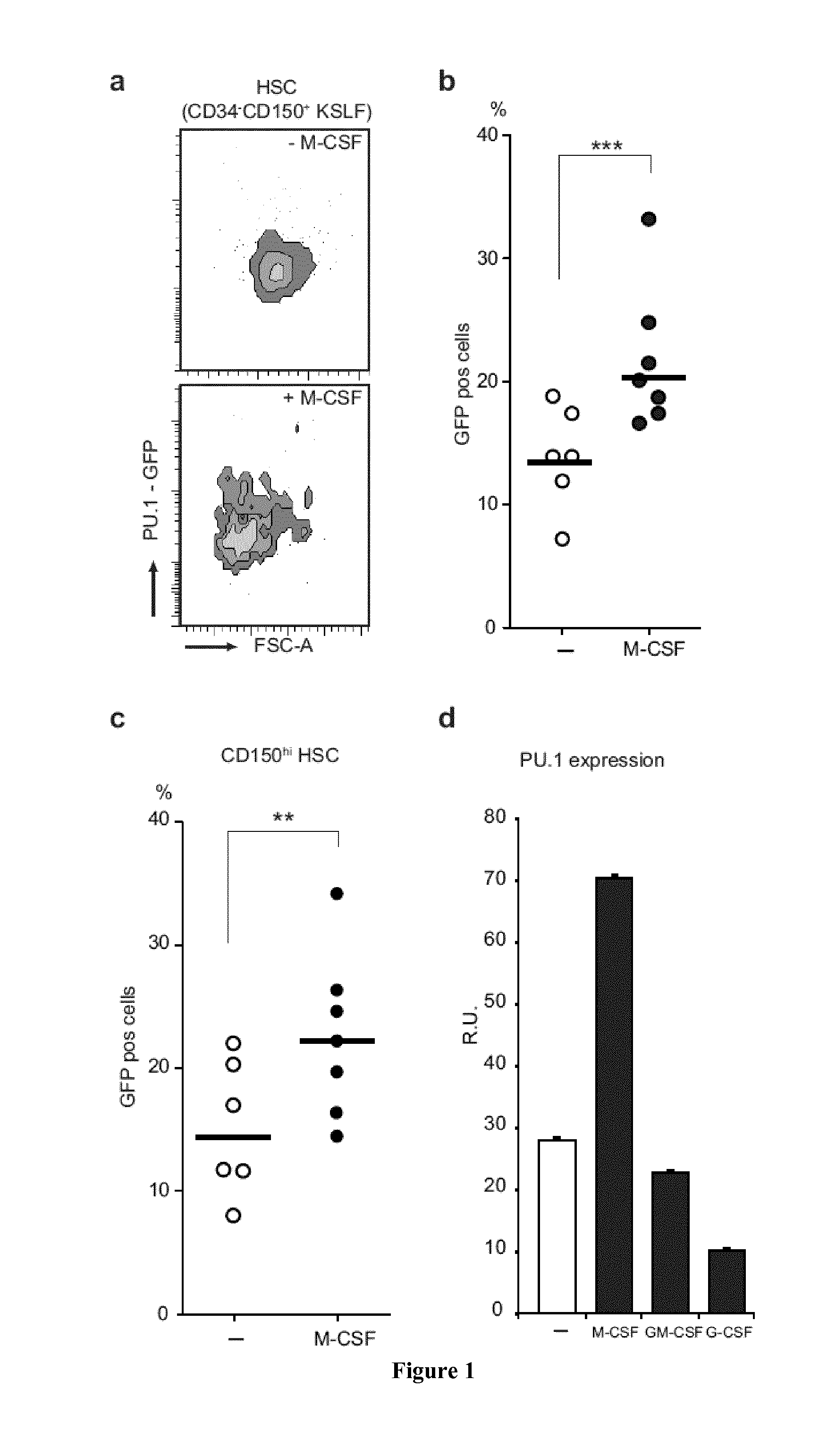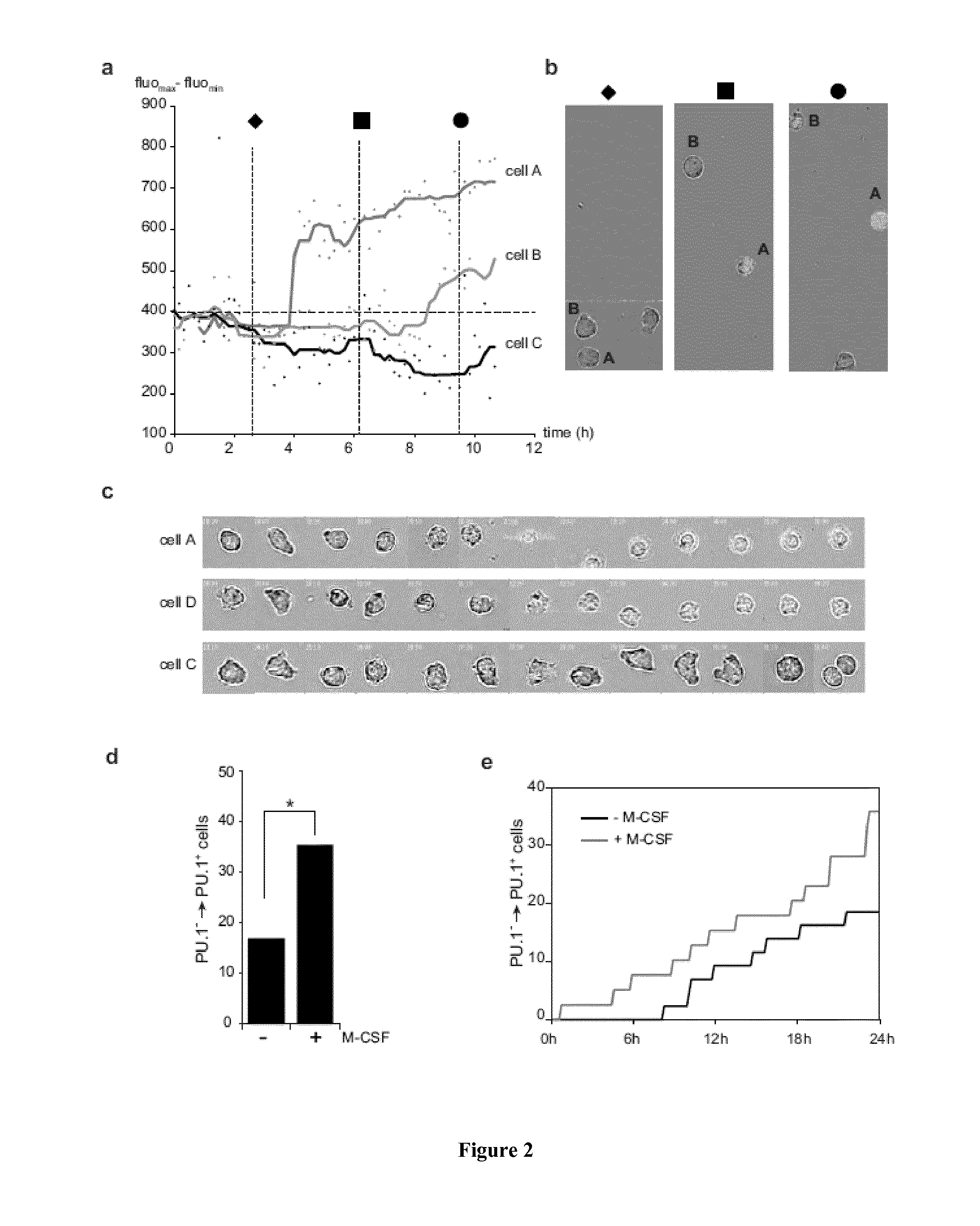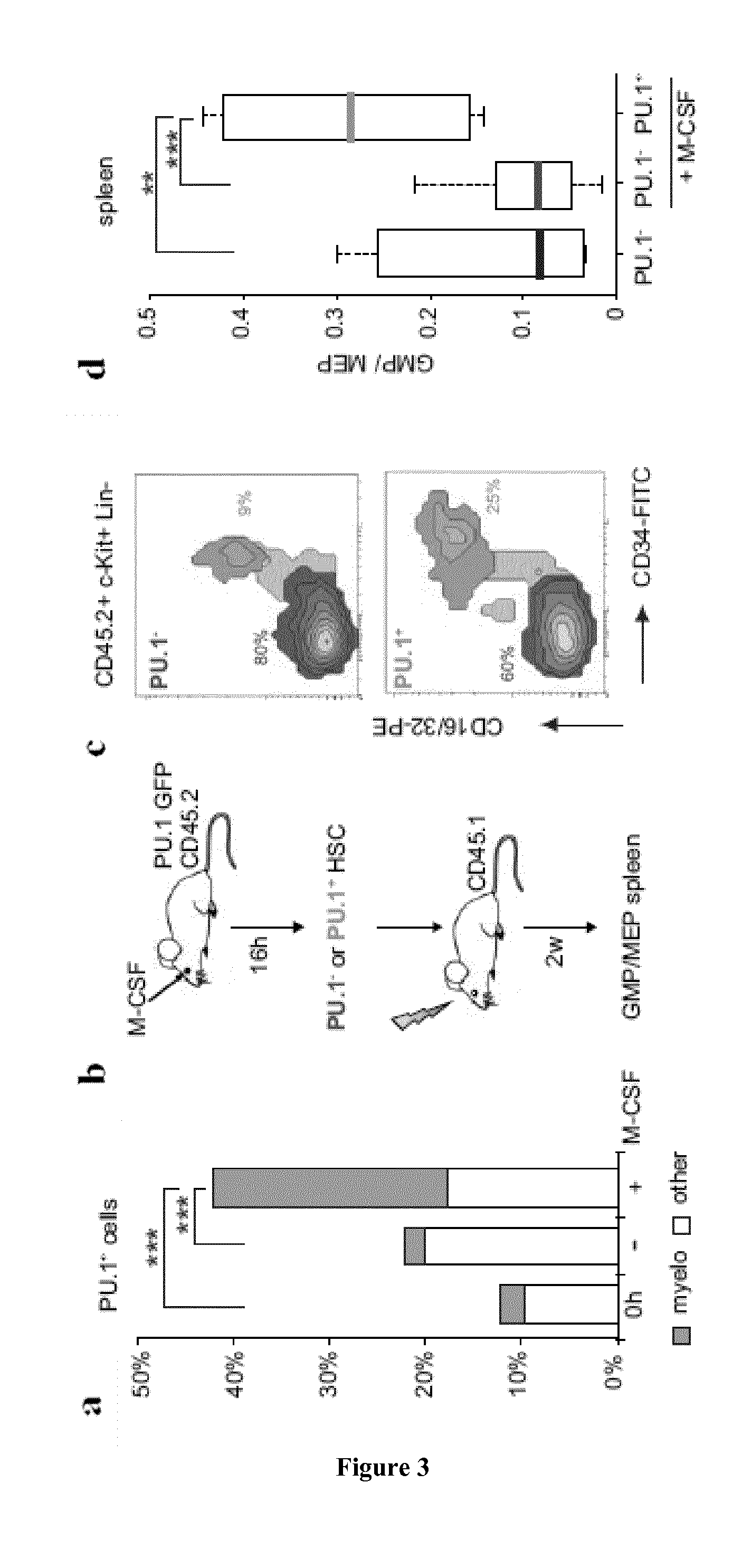Use of m-csf for preventing or treating myeloid cytopenia and related complications
a technology of myeloid cytopenia and mcsf, which is applied in the field of immunodeficiency caused by myeloid cytopenia, can solve the problems of post-transplant morbidity and mortality, infection by opportunistic viruses, bacteria and filamentous fungi, and improve the survival time of patients undergoing hsct.
- Summary
- Abstract
- Description
- Claims
- Application Information
AI Technical Summary
Benefits of technology
Problems solved by technology
Method used
Image
Examples
example 1
M-CSF Instructs Myeloid Lineage Fate in Single Haemotopoietic Stem Cells
[0186]Material & Methods
[0187]Methods Summary:
[0188]Flowcytometry, bone marrow transplantation and in vivo immunofluorescence of HSC were performed essentially as described3. Single cell nano-fluidics-based real-time PCR was performed using a BioMark HD system and 48.48 dynamic arrays (Fluidigm, CA, USA) and videomicroscopy analysis followed proposed standards24. Details of procedures and reagents are described in Supplementary Methods.
[0189]Mice:
[0190]CD45.1 and C57Bl / 6 mice were obtained from Charles River. PU.1-GFP31 M-CSFR− / −27 and PU.1fl / fl 32 mice have been described. Age- and sex-matched CD45.1 recipients that were reconstituted as described3 with CD45.2 foetal liver from wt or M-CSFR− / − embryos27 and PU.1fl / fl or PU.1fl / fl::MxCre bone marrow, were used to isolate CD150+CD34− KSLF HSC not earlier than 8 weeks after reconstitution. For in vivo injections the 10 μg / mouse M-CSF, 5 mg / kg LPS (055:B5 E. coli) ...
examples 2 & 3
Functional Impact of MCSF
[0219]To study the functional impact of MCSF mediated HSC commitment during infections, two separate series of experiments were performed. In all experiments, after lethal irradiation of recipients, 2500 HS / PC with 200,000 cKit-carrier cells from donors were grafted. Uninfected and not transplanted mice served as controls to demonstrate that irradiation was lethal (dotted black line; FIGS. 8A, 8B and FIGS. 10A, 10B; n=12).
[0220]Uninfected mice that received HS / PC transplants served as controls for efficient life saving transplantation (black line; FIGS. 8A, 8B and FIGS. 10A, 10B; n=8). Two other groups of mice received either 3 injections of MCSF (rhMCSF or Bacculo virus produced mMCSF) or PBS on the day of HS / PC transplantation.
[0221]One-week post transplantation these mice were challenged with lethal doses of either the bacteria Pseudomonas aeruginosa or the opportunistic fungus Aspergillus fumigatus.
example 2
MCSF Stimulation Following HS / PC Transplantation Protects Against Bacterial Infection
[0222]Material & Methods
[0223]Mice:
[0224]CD45.1 and C57Bl / 6 mice were obtained from Charles River. 10-14 weeks old sex-matched CD45.2 recipients were reconstituted as described3 with bone marrow derived KSL (c-Kit(CD117)+, Sca+, Lin−) HS / PC isolated from 6-8 weeks old CD45.1. For in vivo injections the indicated concentrations of M-CSF and / or sorted cells were injected in 100-200 μl of PBS into the retro-orbital sinus. For HS / PC transplantation 2500 KLS HS / PC were sorted from CD45.1 mice and mixed with 200,000 cKit− CD45.2 or cKit−, Terr119+ carrier cells prior to injection into lethally irradiated (160 kV, 25 mA, 6.31 Gy) CD45.2 recipient mice. After irradiation all mice were given antibiotics in the drinking water to reduce the chance of opportunistic infection with other pathogens. (All mouse experiments were performed under specific pathogen-free conditions in accordance with institutional guide...
PUM
| Property | Measurement | Unit |
|---|---|---|
| molecular weight | aaaaa | aaaaa |
| temperature | aaaaa | aaaaa |
| volume | aaaaa | aaaaa |
Abstract
Description
Claims
Application Information
 Login to View More
Login to View More - R&D
- Intellectual Property
- Life Sciences
- Materials
- Tech Scout
- Unparalleled Data Quality
- Higher Quality Content
- 60% Fewer Hallucinations
Browse by: Latest US Patents, China's latest patents, Technical Efficacy Thesaurus, Application Domain, Technology Topic, Popular Technical Reports.
© 2025 PatSnap. All rights reserved.Legal|Privacy policy|Modern Slavery Act Transparency Statement|Sitemap|About US| Contact US: help@patsnap.com



